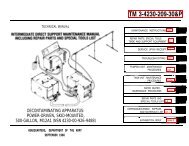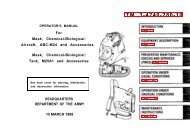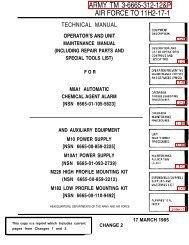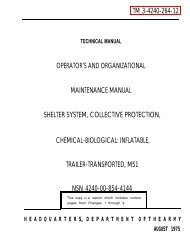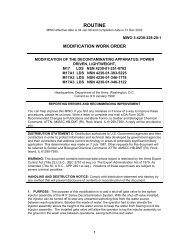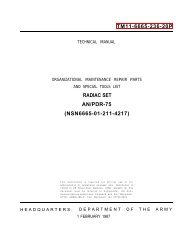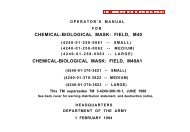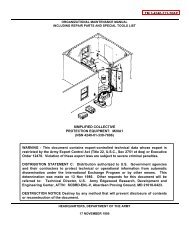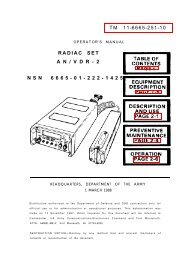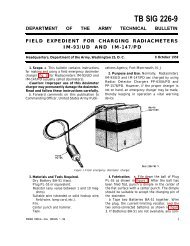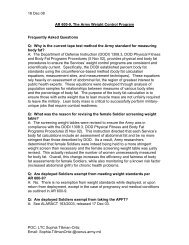LEADER DEVELOPMENT FOR AMERICA'S ARMY
LEADER DEVELOPMENT FOR AMERICA'S ARMY
LEADER DEVELOPMENT FOR AMERICA'S ARMY
You also want an ePaper? Increase the reach of your titles
YUMPU automatically turns print PDFs into web optimized ePapers that Google loves.
the evaluation phase. In contrast with assessments, evaluations are directly linked to a leader’s selection for promotion,<br />
schooling, and various duty assignment.<br />
Not all leaders will develop at the same rate or to the same level. Thus leaders must be placed in positions of<br />
leadership for which they are prepared. A leader should meet the commander’s or supervisor’s entry minimums for a<br />
leadership position before he is thrust into that position.<br />
Chapter 2<br />
INSTITUTIONAL TRAINING AND EDUCATION<br />
Institutional training and education are the foundation upon which leaders are developed to realize their maximum<br />
potential. It consists of resident and nonresident instruction for officers, warrant officers, noncommissioned officers,<br />
and civilian education systems and functional courses.<br />
The education systems — Officers Education System (OES), Warrant Officers Education System (WOES), Noncommissioned<br />
Officers Education System (NCOES), and Civilian Training and Education Development System — provide<br />
the progressive and sequential training and education that prepares individuals for positions of greater responsibility<br />
(figure 5). Functional courses such as Pre–Command, Ranger, Airborne, First Sergeant, Battle Staff NCO, and the<br />
TRADOC Training Developers Course provide additional qualification training so leaders can acquire requisite skills,<br />
knowledge, and behavior needed for specific assignments.<br />
Institutional training and education provides the foundations for leader development. It is a foundation on which unit<br />
commanders and supervisors can build, mold, and shape leaders and on which the developing leaders can base their<br />
self–development.<br />
Proponents prepare individual training plans (ITP) to train, develop and evaluate SKBs for leaders at all levels. They<br />
develop strategy and products needed to carry out plans. Products include Soldier’s Manuals, Military Qualifications<br />
Standards (MQS) manuals, extension training material, trainer guides, and Training Support Packages (TSPs). Additionally,<br />
branch proponents develop career development models that guide leader growth and development throughout<br />
careers. Career development model initiatives encompass the three pillars of the leader development process. An<br />
example of a generic officers career development model is shown in figure 6. Similar models exist for warrant officers<br />
and NCOs. The Army Civilian Training, Education, and Development System (ACTEDS) serves a similar function for<br />
some civilian career fields.<br />
Proponents develop course programs of instruction (PIOs) with learning objectives designed for specific branch<br />
missions. Learning objectives consist of leadership and technical and tactical tasks that promote the acquisition of<br />
SKBs that the leaders need to successfully fulfill their roles, perform duties, and accomplish missions.<br />
Institutional training and education are equally essential to the development of all leaders. Trainers are held to<br />
TRADOC standards regardless of how or where the training takes place.<br />
DA PAM 350–58 • 13 October 1994<br />
9




